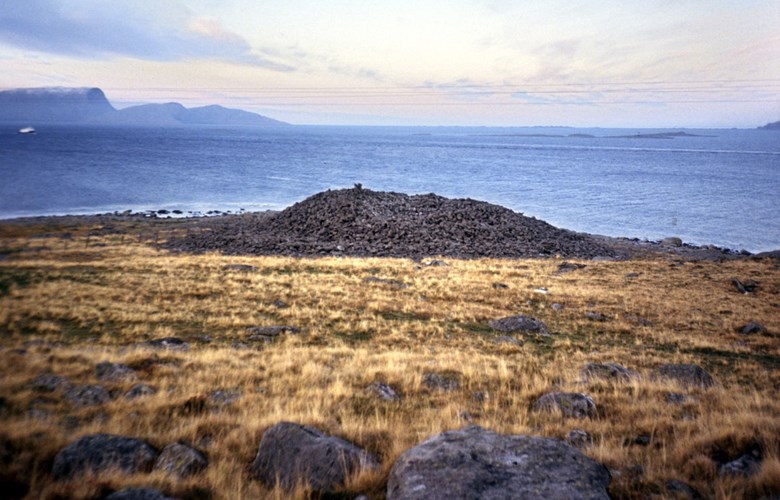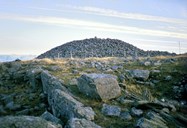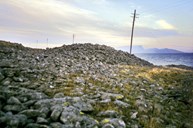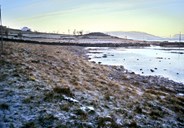Grave covered with a mound of rocks
What today is a typical coastal hamlet, was about 3000 years ago the setting of impressive funeral ceremonies. The deceased, perhaps a powerful chieftain, was laid to rest in a specially made coffin of stone slabs with various weapons, tools and other types of equipment. Then the time-consuming work was begun to cover the grave with tonnes upon tonnes of rock. The work was only stopped when the grave had the appearance of a marked mound in the landscape.
Status symbol and hierarchy
The burial mounds are still after so many years in relatively good shape. Admittedly, the graves have become flatter with the passage of time, but their dimensions are still very impressive. The biggest one has a diameter of 36 metres, whereas the smallest one measures 14 metres across. In other words, it would take a massive work effort to build these graves, which shows that they were built at a time of a clearly defined hierarchy. Consequently, the burial mounds are good symbols of the cultural and societal development in the Bronze Age.
More agriculture, but little bronze in the Bronze Age
In the latter part of the younger Stone Age (4000 - 1800 BC) and up towards the Bronze Age, the society develops more in the direction of an agrarian society. This does not necessarily mean that agriculture replaced hunting and fishing, but more in the sense that people became more attached to the soil, at the same time as there was more use of domestic animals and cultivation was improved. In the first period of agriculture, only the meat and hide of the animals were used, but closer to the Bronze Age, people started to use important animal by-products such as milk, blood, and wool. Later on, cattle were used as draught animals. For most people, these changes had a much more drastic impact on their lives than the discovery of bronze, a metal few people could afford.
On the other hand, bronze symbolizes the growth of new social distinctions, perhaps partly as a result of the emerging agrarian society. Whereas the hunting success could vary much from one year to another, the control of soil and land led to a more stable income. However, there is every reason to underline that very little is known about agriculture at that time, and all indications point to fishing and hunting as vital elements in people's daily lives.
Continental impulses
The Botnane burial mounds are also an indication that the Bronze Age people were open to impulses from the continent, both in terms of the prevailing technology and religious ideas. There is some uncertainty as to the religious faith leading to the building of the burial mounds, but what is certain, is that this custom was a common European phenomenon. In the same way as for many earlier and later cultural impulses, the custom of building burial mounds came from Jutland in Denmark.
The mounds have been opened, and we can see that they are built according to the same model as those found on the continent. The bottom of the grave consists of a layer of small rolling stones. Then there is a coffin built of stone slabs. The shape of the coffin in the northern mound has been interpreted in such a way that the deceased has been buried with his head facing the south. With the exception of a few shards and pieces of bones, no other remnants of the deceased have been found, nor of any other objects. However, from other similar graves we know that it was common for men to be buried with weapons such as axe, sword, or knife, whereas women were buried with ornamental objects such as belt buckles and jewellery
The coastal mound - a landmark
The burial mounds at Botnane, however, are not exactly like the Jutland mounds. In Denmark the stones were covered with a thick layer of soil, but along the coast of Norway it was common to build a bare rock mound. This type of burial mound has been called coastal mound.
As the rock mounds have not been covered with masses of soil, they have not become overgrown, but are after a period of3000 years, still visible for passers-by. The fact that they are visible is hardly accidental. It is quite evident that the burial mounds also had a function beyond being impressive graves. Whereas some of the mounds have collapsed today, they were indeed towering constructions when they were built. The fact that some of them were built on hills and cliffs indicates that this was an intended effect. In this way they were also visible from the shipping lane, making the seafarers aware that this area was populated with people of wealth and power.






